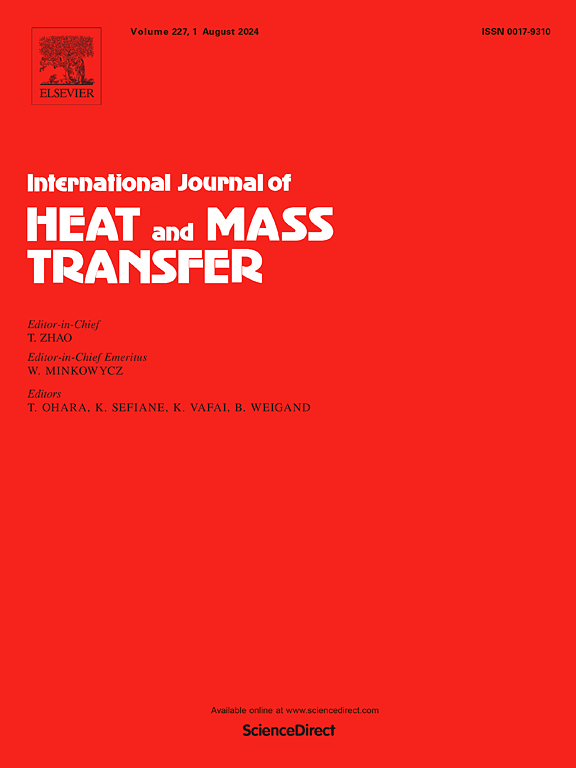Numerical investigation on reversible reactive flow inside ribbed channels with different inclined angles
IF 5
2区 工程技术
Q1 ENGINEERING, MECHANICAL
International Journal of Heat and Mass Transfer
Pub Date : 2025-02-18
DOI:10.1016/j.ijheatmasstransfer.2025.126820
引用次数: 0
Abstract
In accordance with the United Nations Sustainable Development goal #7 – affordable and clean energy, the concept of reversible reactive flow (N2O4/NO2) inside ribbed channel is proposed for low-temperature waste heat recovery. Quasi direct numerical simulations are performed to reveal the relationship between flow, heat/mass transfer, and chemical characteristics with different rib inclined angles (90° and 45°). The analyses indicate that the reaction of N2O4 ⇌ 2NO2 has limited influence on flow patterns inside the ribbed channel, but intensifies the heat transfer considerably. For the 90° reactive case, the enhancement of Nusselt number reaches 112.7 % when Reynolds number is 2000. Although non-equilibrium thermal-chemical phenomenon is observed by instantaneous snapshots, time-averaged results show that the forward endothermic reaction is concentrated close to the heated wall. The flow structures transport fluid pocket consisting of “overheated” gas and triggers local backward exothermic reaction, which decreases the thickness of thermal boundary layer and thereby intensifies the overall heat transfer. For the 45° inclined reactive case, a flow circulation at local equilibrium between heat release and absorption is formed by the rib-induced large-scale vortices. The comprehensive thermal performance is further improved by 24.6 % compared to the 90° reactive case, which attributes to higher Nusselt number and lower friction loss.
求助全文
约1分钟内获得全文
求助全文
来源期刊
CiteScore
10.30
自引率
13.50%
发文量
1319
审稿时长
41 days
期刊介绍:
International Journal of Heat and Mass Transfer is the vehicle for the exchange of basic ideas in heat and mass transfer between research workers and engineers throughout the world. It focuses on both analytical and experimental research, with an emphasis on contributions which increase the basic understanding of transfer processes and their application to engineering problems.
Topics include:
-New methods of measuring and/or correlating transport-property data
-Energy engineering
-Environmental applications of heat and/or mass transfer

 求助内容:
求助内容: 应助结果提醒方式:
应助结果提醒方式:


